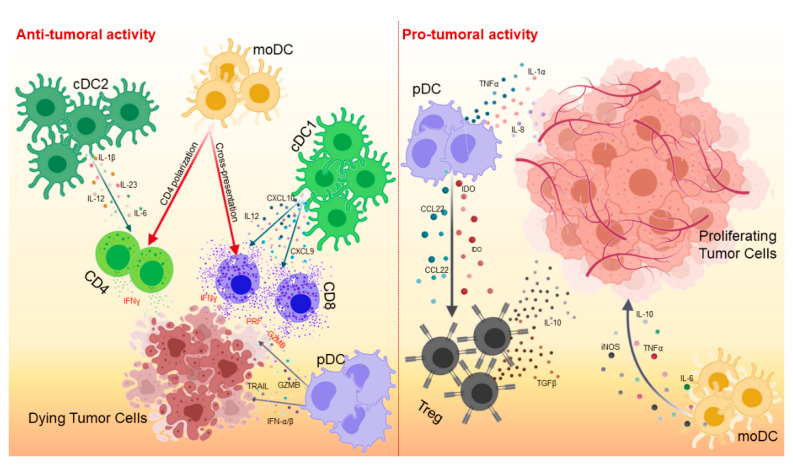Figure 1.
Activity of dendritic cell (DC) subsets in cancer immunity. In the TME, DCs can have both an anti-tumor and pro-tumor effect. Anti-tumor activity is mainly driven by cDC1s and cDC2s (left panel). cDC1s induce recruitment and activation of CD8+ T lymphocytes in the TME through cytokine production and cross-presentation of tumor antigens, respectively. cDC2s are the major activators of CD4+ T cells. moDCs act mainly by stimulating cDC1s and cDC2s, whereas pDCs kill tumor cells through the expression of IFN-α/β, TRAIL and Granzyme B (GZMB). moDCs and pDCs may also have a pro-tumor action by creating an immunosuppressive environment and promoting tumor growth (right panel). moDCs produce molecules with immunosuppressive function such as iNOS, TNFα, IL-6 and IL-10. pDCs secrete chemokines able to recruit Tregs into the TME (CCL22 and IDO) as well as pro-angiogenic cytokines (TNFα, IL-8, and IL-1α).

